Looking around the world, data, as an emerging factor of production, plays a vital role in global economic and trade activities, driving the vigorous rise of the digital economy. According to forward-looking forecasts, by 2025, the contribution of global data flows to overall economic growth is expected to reach a staggering US$11 trillion.
In recent years, the country’s attention to data elements has been increasing. On December 31, 2023, 17 departments including the National Data Administration jointly issued the "Data Elements ×" Three-Year Action Plan (2024-2026). , building a digital economy with data as a key element is an inevitable requirement to promote high-quality development.
It is foreseeable that in 2024, a new "data×" era will fully kick off, releasing the data multiplier effect and catalyzing the development of new productivity. The key path to achieve this goal is to promote the process of data capitalization , use data elements to drive business changes, and realize data value.
This article will delve into the definition and importance of data elements and data capitalization, and clarify their key roles in the context of big data. At the same time, we will sort out the path to realize data assetization and how to realize the application value of data, so as to empower the innovative development of enterprises in the new era and achieve business upgrades and value transitions.
Data elements & data capitalization
What are data elements?
According to the "Data Elements White Paper (2022)", data elements refer to data resources that participate in social production and business activities and bring economic benefits to owners or users. Therefore, the term "data elements" is oriented to the digital economy. The reference to "data" in the context of discussing productivity and production relations emphasizes the value of data in promoting production. That is, data elements refer to the production value based on specific production needs. Computer data collected, sorted, and processed and their derivative forms, original data sets, standardized data sets , various data products invested in production, and systems, information, and knowledge generated based on data can all be included in the discussion of data elements. category.
The core properties of data elements include uniqueness, atomicity , and clarity of definition, which enable them to be accurately identified, processed, and analyzed by the system. For example, our mobile phone numbers, email addresses, web browsing records, etc., these are all data elements that can be collected, stored, analyzed and utilized to help us make better decisions and solutions.
The necessity of data capitalization
In the digital economy, ensuring the efficient and secure use of data is crucial. The implementation of data assetization is the basis for building a data quality and security assurance system. Data capitalization includes rules and standards for the collection, storage, use and sharing of data. In addition, data capitalization also involves data privacy protection and compliance requirements to ensure that the use of data does not infringe on personal rights or violate laws and regulations.
Therefore, it can be said that data capitalization is the basis for realizing " data element x ". Only through standardized management of data assets can conditions for data to realize economic value be created. Through data capitalization, the acquisition, storage, processing, sharing and use of data assets can be better managed, and the reliability, accuracy and security of data can be improved.
How to realize data capitalization?
With the help of Kangaroo Cloud's " data asset management platform ", through a complete link of metadata collection, metadata management, and metadata analysis, standardized metadata information is collected and maintained, and the data relationship network is opened up, so that enterprises can realize the capitalization of data. Standardization and standardized management.
In addition, enterprises can understand the overall data assets through asset inventory , combined with data security management and control related functions, to provide a "complete, unified, and connected" metadata foundation for data value mining, fully unleash the potential of data elements, and drive business innovation and upgrades.
Metadata collection
Metadata collection is the basis for realizing data assetization. To collect metadata information, you must first conduct internal research to sort out the business data, lake warehouse data, or application data that the enterprise needs to conduct unified metadata management. After collecting the data source connection information of various types of data, apply for read-only metadata permissions from each data person in charge to collect metadata.
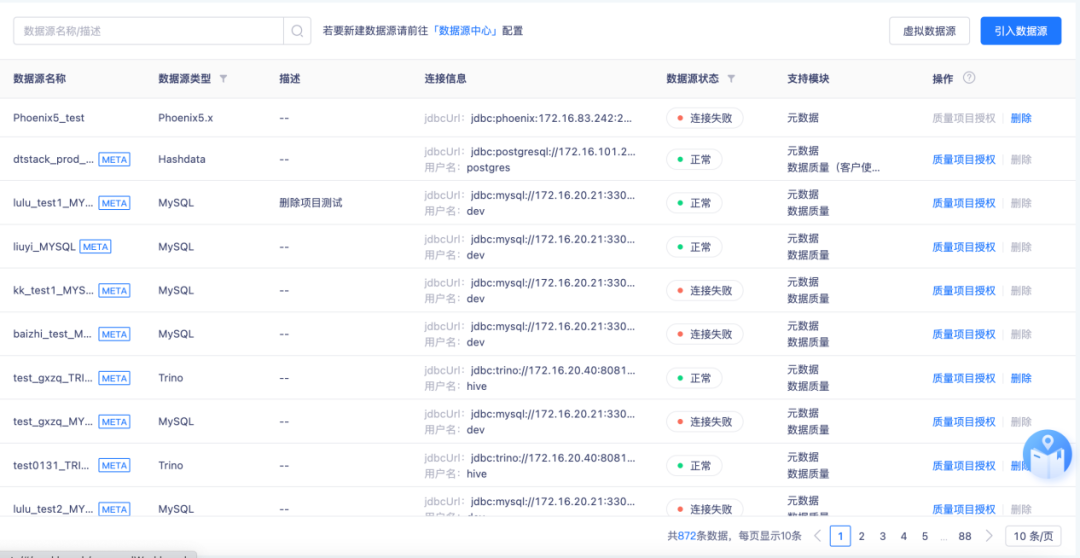
After successfully connecting to the data source, periodic synchronization tasks and temporary synchronization tasks for specific data sources or databases can be created through the Kangaroo Cloud " Data Asset Management Platform ". If there is database table information that does not need to be collected and maintained, you can set database filtering conditions and data table filtering conditions to prevent unimportant databases/tables from being synchronized to the asset platform, and support configuring the temporary synchronization content of metadata and the scheduling cycle of synchronization tasks.
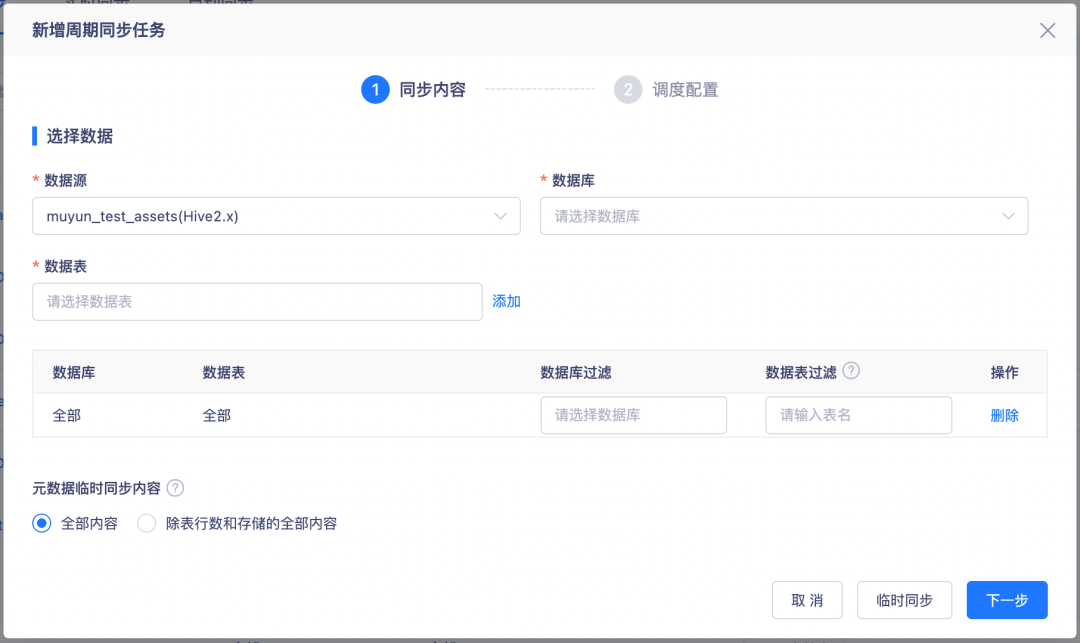
After the synchronization is completed, the platform will automatically collect the metadata information of the data tables under each type of data source, such as the database to which it belongs, the creation time of the data table, the last change time of DDL, storage location, storage size, storage format, number of table rows, and table type. and other technical attribute information, and complete the preliminary maintenance work of data assetization.
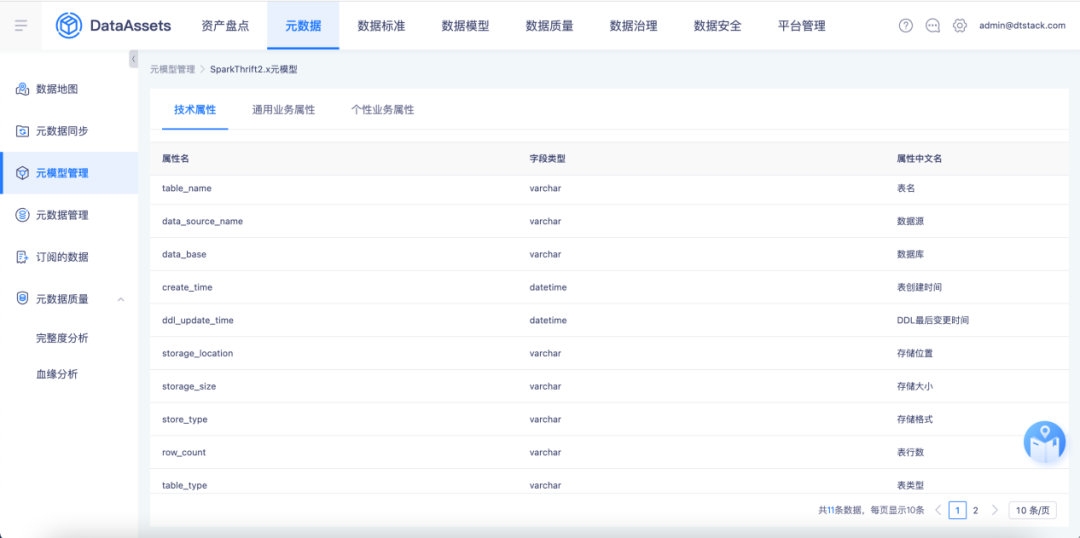
Metadata management
After completing the metadata collection, standardized management of metadata can be carried out according to specific business needs to improve the quality of data assetization. First, you can communicate with the person in charge of each data source offline about the lack of metadata, discuss the metadata model design specifications, list the metadata items that need to be maintained for each type of data source, and enter them into the platform.
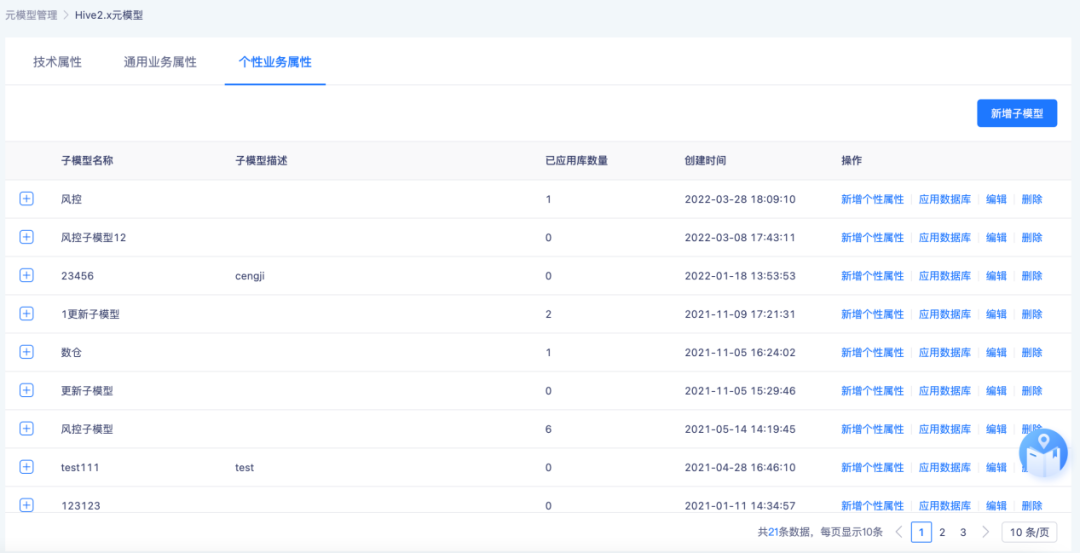
Secondly, metadata maintenance methods can be used to assign a person responsible for each piece of metadata to ensure that the metadata maintenance work can be assigned to the person responsible. The person in charge needs to completely maintain the missing metadata information according to the arrangement, and all maintenance personnel can add custom tags to the data assets to facilitate quick query of data asset information according to the tag classification. Managers can regularly count metadata integrity and track the progress of metadata maintenance. They can conduct regular statistics based on multiple dimensions such as data sources and responsible persons, discover problems in a timely manner, and urge responsible persons to improve metadata information.
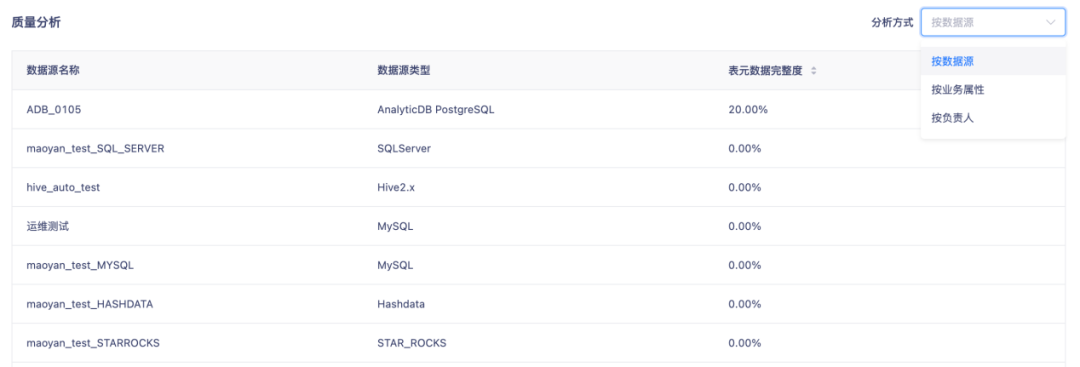
At the same time, through the data standard management capabilities provided by the platform , the field-level standard information of data assets can be standardized. Through root management and standard management, the standard information of the fields in the data table is defined, such as field name, field Chinese name, field type, field length and other information.
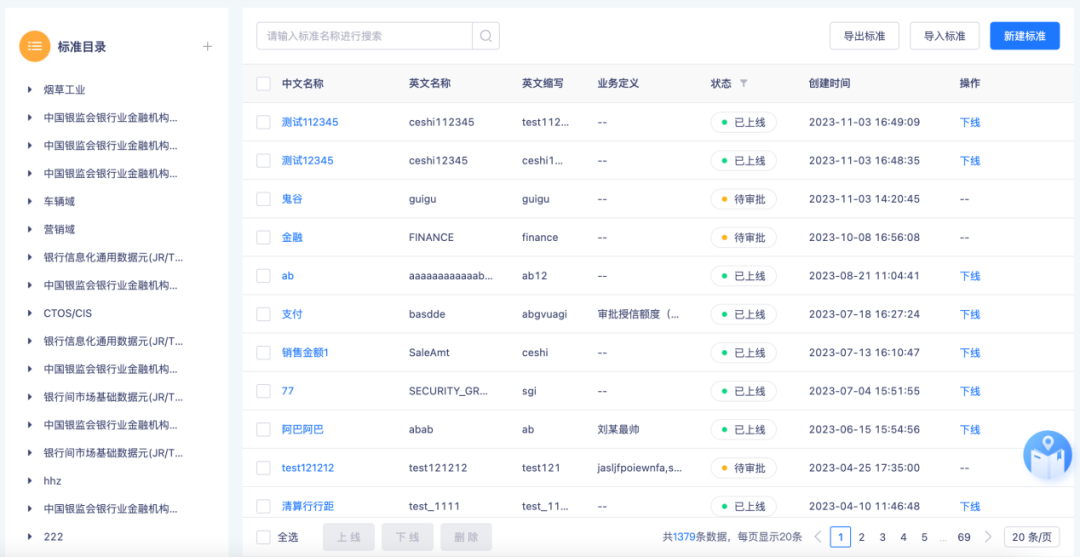
Metadata analysis
After completing the metadata collection and metadata management, analysis can be carried out based on the metadata information. The platform provides completeness analysis, quality analysis, and lineage analysis of metadata , and comprehensively analyzes and integrates the asset information within the enterprise to facilitate Enterprises effectively manage data assets.
Completeness analysis: Statistical completeness percentage, supporting statistical analysis from multiple dimensions including platform level, data source type level , data source level, database level, person in charge level, and specific attribute level. For example, when conducting statistical analysis according to the dimension of the person in charge, the statistical results can be fully utilized to promote and supervise data developers to maintain metadata information in a timely and complete manner.
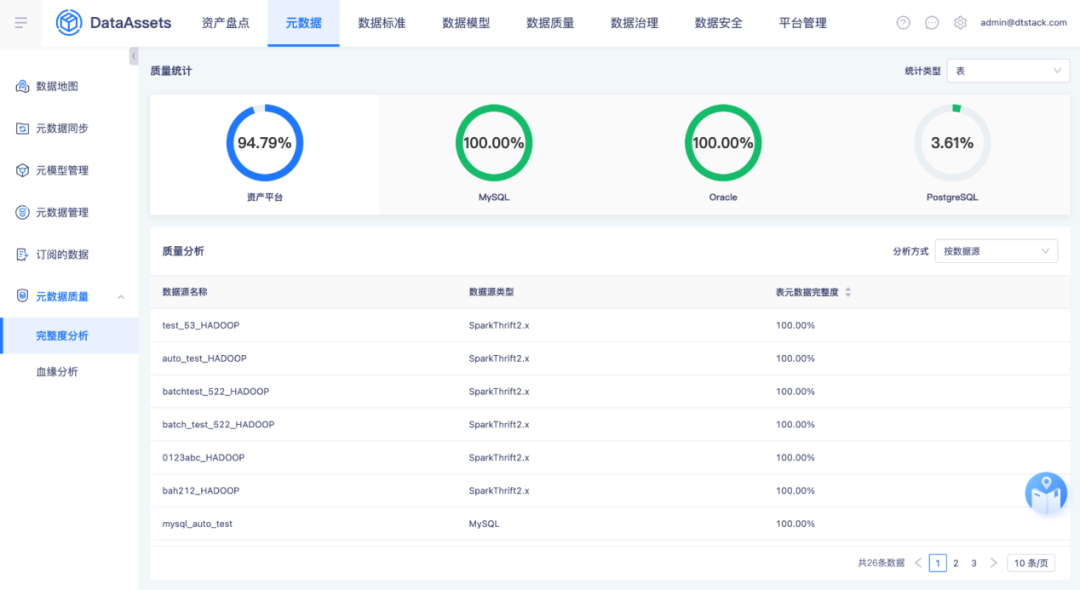
Quality analysis: The platform provides quality verification capabilities and can provide a variety of quality monitoring scenarios . It has built-in rich verification functions for single table verification and multi-table comparison to meet the needs of enterprises for data timeliness, completeness, consistency, and Requirements for multi-dimensional verification of validity and accuracy. Through the process of pre-event rule configuration, in-event rule verification, and post-event analysis report, multi-dimensional evaluation of data is carried out to ensure the quality of enterprise data.
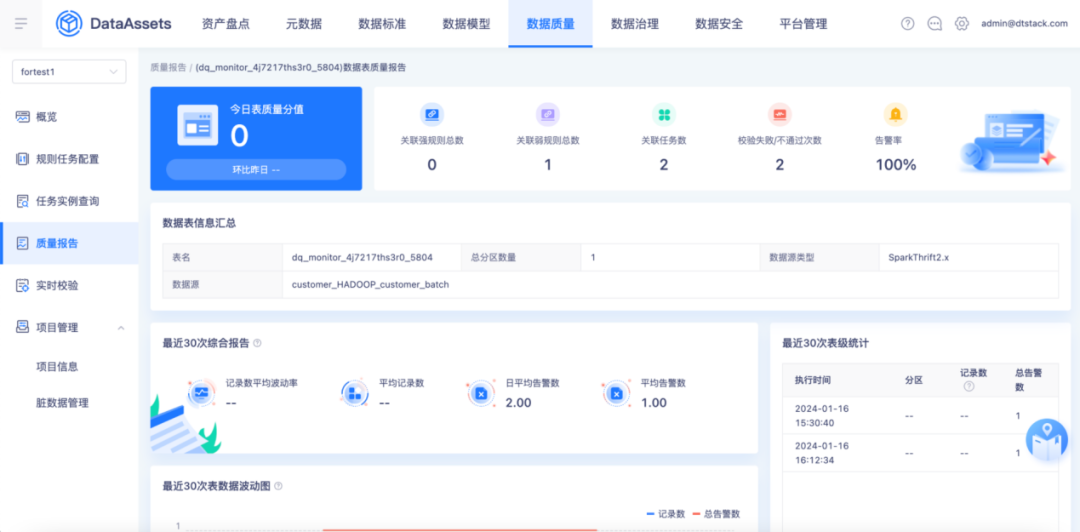
Blood relationship analysis: Through the blood relationship analysis capability , enterprises can promptly discover some tables that definitely have blood relationships, but the blood relationships are missing, such as tables at the downstream levels of data warehouses, BI reports, etc. Enterprises can set up database information that needs to monitor blood relationships. The platform will use the results of blood relationship SQL analysis and the statistics of isolated blood relationship tables in the database to assist enterprises in monitoring the quality of data assets and optimizing asset storage space.
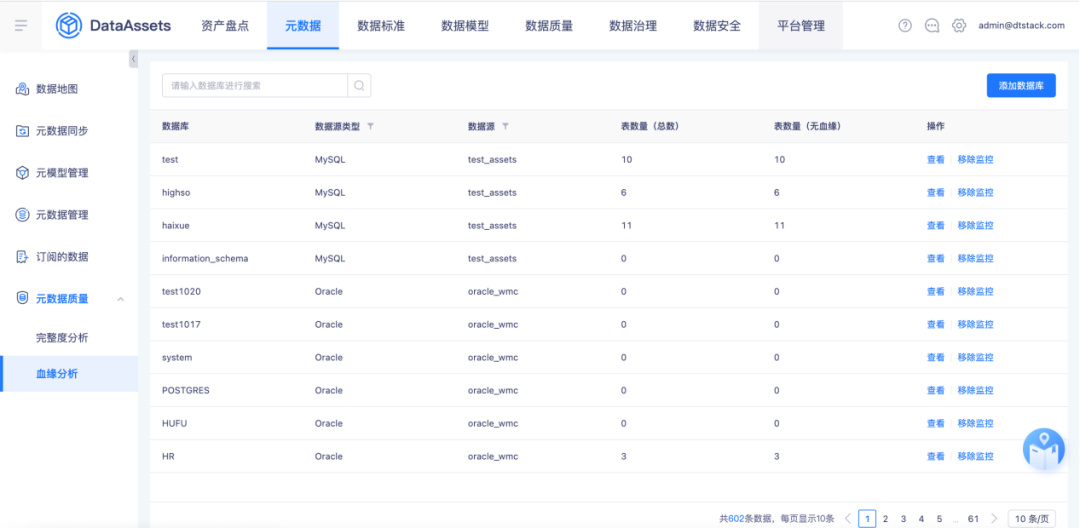
Asset inventory and display
The platform provides a data map function , which summarizes all enterprise asset data, including database tables, development tasks, indicators, tags, APIs and other types of data assets, providing users with a unified, complete and convenient metadata query portal . It supports a variety of search modes and filtering conditions to quickly locate metadata. It can also continuously discover missing metadata based on query results and support the maintenance of metadata.
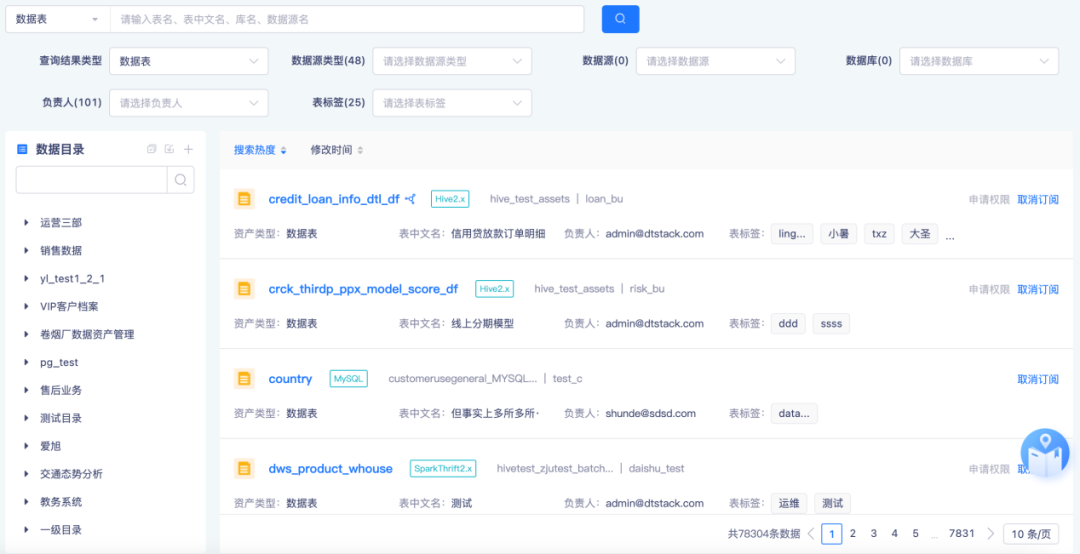
At the same time, the platform also provides an asset dashboard , through which enterprises can analyze the changing trends, distribution, value rankings, storage proportions and other information of overall assets to fully understand the overall situation of data assets. Provide management with asset visualization access to assist management in making decisions on construction directions.
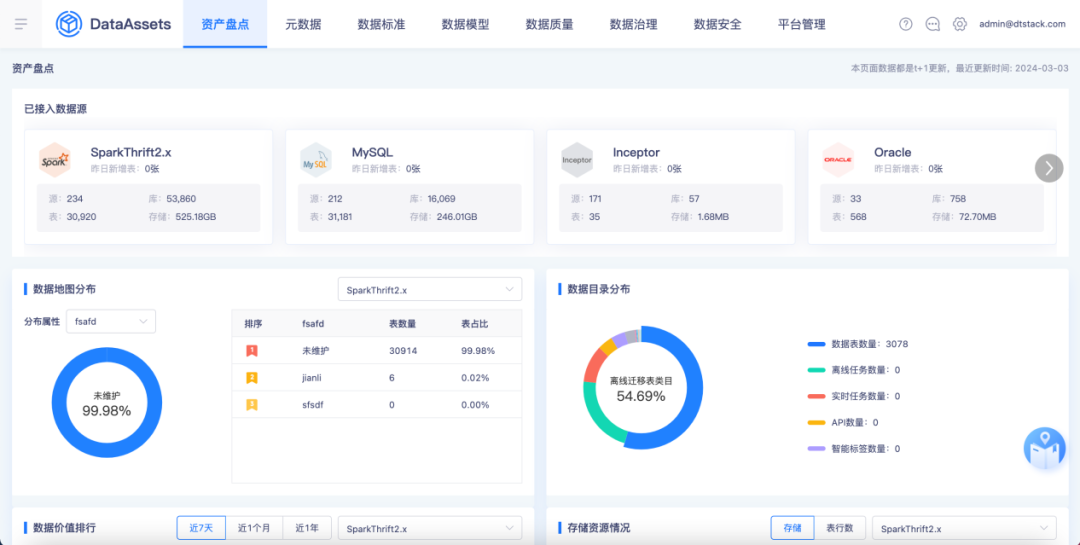
Data security control
The management of data assetization is inseparable from data security control . Kangaroo Cloud's " data asset management platform " supports data desensitization rule management , data permission management and data classification. For some sensitive data, such as mobile phone numbers, ID numbers and other private information, you can customize the desensitization rules for desensitized display. The platform supports row-level permission configuration, and can control the scope of user permissions based on data classification and linking with user levels to achieve fine-grained control of data permissions.
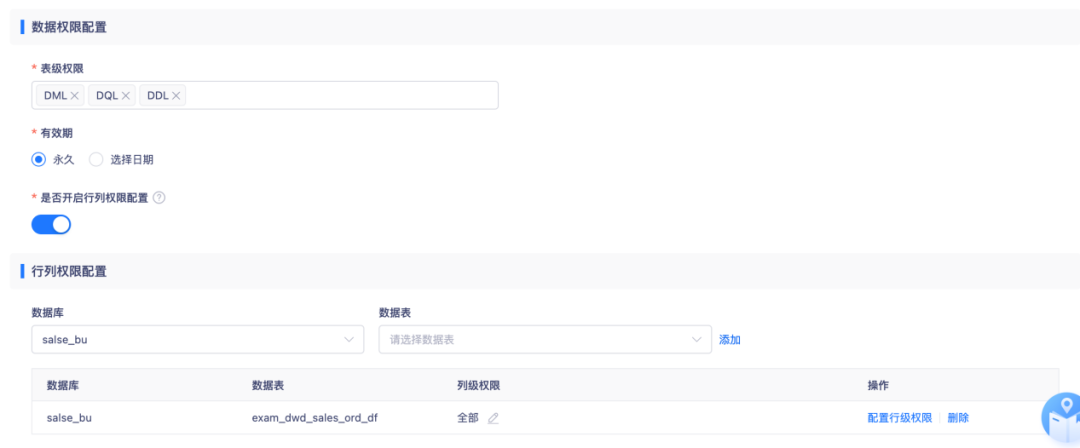
Summarize
数据资产化能够显著提升企业的数据管理效能,充分挖掘和实现数据的应用价值。通过这一过程,企业能够系统地对数据进行分类、存储、检索,实现数据的统一汇聚,而不是分散在各个系统、各个文件中。
At the same time, the unified management model brought about by data capitalization plays a key role in strengthening data security. Enterprises can desensitize and encrypt data and control confidentiality levels to ensure that only authorized personnel can access and modify the data, thereby ensuring the security and privacy of data to the greatest extent and enabling enterprises to fully utilize data assets under the premise of compliance. Lay the foundation.
Data is the starting point of everything. Enterprises should attach great importance to the promotion of data assetization, strengthen data management capabilities, and make full use of data assets to promote the sustainable development of enterprises.
Users with data asset needs can click on the link below to try out the [Data Asset Platform].
Data asset platform: https://www.dtstack.com/dtinsight/dataassets?src=szsm
"Industry Indicator System White Paper" download address: https://www.dtstack.com/resources/1057?src=szsm
"Dutstack Product White Paper" download address: https://www.dtstack.com/resources/1004?src=szsm
"Data Governance Industry Practice White Paper" download address: https://www.dtstack.com/resources/1001?src=szsm
For those who want to know or consult more about big data products, industry solutions, and customer cases, visit the Kangaroo Cloud official website: https://www.dtstack.com/?src=szkyzg
Linus took it upon himself to prevent kernel developers from replacing tabs with spaces. His father is one of the few leaders who can write code, his second son is the director of the open source technology department, and his youngest son is an open source core contributor. Robin Li: Natural language will become a new universal programming language. The open source model will fall further and further behind Huawei: It will take 1 year to fully migrate 5,000 commonly used mobile applications to Hongmeng. Java is the language most prone to third-party vulnerabilities. Rich text editor Quill 2.0 has been released with features, reliability and developers. The experience has been greatly improved. Ma Huateng and Zhou Hongyi shook hands to "eliminate grudges." Meta Llama 3 is officially released. Although the open source of Laoxiangji is not the code, the reasons behind it are very heart-warming. Google announced a large-scale restructuring